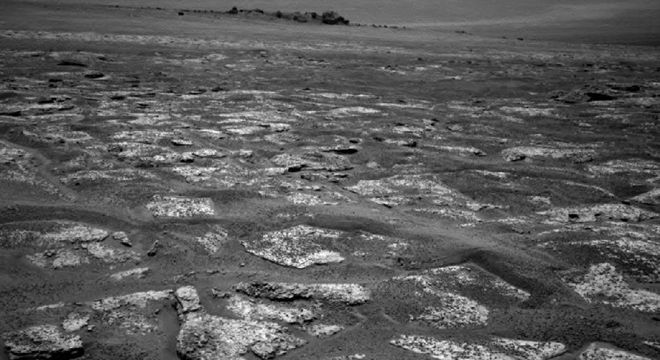If you’ve ever dreamed of visiting Mars, buckle up: The following video of NASA’s Mars Opportunity Rover crawling the surface of the red planet between September 2008 and August 2011 is about as close as you’re going to come at this point.
Opportunity’s panoramic still-image camera captured 309 photos as the rover crawled 13 miles to get from Martian Victoria to another, larger crater, the 14-mile-diameter Endeavor, where the rover is currently still located, busy inspecting Martian rocks. The still images were then stitched together to create the video slideshow. A soundtrack was also added by taking data from Opportunity’s accelerometers and speeding it up by 1,000 times to achieve an audible frequency.
“The sound represents the vibrations of the rover while moving on the surface of Mars,” said Paolo Bellutta, a rover planner at NASA’s Jet Propulsion Laboratory, Pasadena, Calif., in a statement on the NASA website. “When the sound is louder, the rover was moving on bedrock. When the sound is softer, the rover was moving on sand.”
The Jet Propulsion Laboratory manages Opportunity and was in charge of piloting twin Mars rover Spirit, until that rover stopped sending back transmissions in May. (The Spirit rover was notoriously finicky from the getgo, with a sticky wheel that forced it to be driven backwards until it got entirely stuck in sand in 2010, forcing NASA operators to turn it into a stationary laboratory.)
Still, both rovers, launched in 2003, have long outlasted their original three-month mission and have provided a number of important discoveries since then, namely those related to more evidence in support of water having covered parts of the Martian landscape. In December 2009, while Spirit was turning its wheels in an attempt to escape from the sand, it churned up sulfates, materials that are formed by steam vents. Then in September, Opportunity found high levels of zinc and bromine in a meteor in the Endeavor crater, also frequently formed by hot water deposits.
More discoveries and video footage are on the way: The new Curiosity Mars rover, which is set to launch on November 25, 2011, the day after American Thanksgiving. It will have a high-resolution video camera for beaming moving images back to Earth. You can check out construction of that rover on NASA’s website (scroll down) and follow along with the Opportunity on Twitter.









